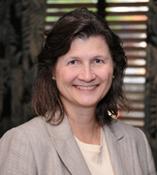Medical Physics Seminar – Monday, April 17, 2017
CAMERON SYMPOSIUM LECTURE - Radiomics and Deep Learning in Medical Imaging for Precision Medicine

Maryellen L. Giger, PhD
A.N. Pritzker Professor of Radiology, the Committee on Medical Physics, and the College Vice-Chair for Basic Science Research, Dept of Radiology, The University of Chicago, Chicago, IL - USA
Adapting the Precision Medicine Initiative into imaging research includes studies in both discovery and translation in order to enable the conversion of current radiological interpretation from that of the “average patient†to the precise interpretation and patient-care management decisions specific to the individual. The goal is to individually detect disease, and then give the right person the right treatment at the right time. Discovery is a multi-disciplinary data mining effort involving researchers such as radiologists, medical physicists, oncologists, computer scientists, engineers, and computational geneticists. Similar to how the genomics community approached the big biology of the Cancer Genome project, the radiological community continues to conduct robust collection, annotation, analysis, and evaluation of images of large populations. Advances in computer power and machine learning algorithms are allowing for computer-extracted features (phenotypes), both from clinically-driven computer-extraction systems (such as those from computer-aided detection/diagnosis) and deep learning methods, to yield “radiomicsâ€, i.e., the high throughput conversion of image sets into a multi-dimensional feature space. With quantitative imaging, a patient’s tumor can be characterized quantitatively via these “virtual digital biopsiesâ€. Ultimately translation of the discovered relationships will include applications to the clinical assessments of cancer risk, prognosis, response to therapy, and risk of recurrence.
------------------------
Maryellen L. Giger, Ph.D. is the A.N. Pritzker Professor of Radiology, Committee on Medical Physics, and the College at the University of Chicago. She is also the Vice-Chair of Radiology (Basic Science Research) and the immediate past Director of the CAMPEP-accredited Graduate Programs in Medical Physics/ Chair of the Committee on Medical Physics at the University. For 30 years, she has conducted research on computer-aided diagnosis and quantitative image analysis (radiomics) in the areas of breast cancer, lung cancer, prostate cancer, and bone diseases. She has also served on various NIH study sections, is a former president of the American Association of Physicists in Medicine, is the inaugural Editor-in-Chief of the SPIE Journal of Medical Imaging, and the current President-Elect of SPIE. She is a member of the National Academy of Engineering, a Fellow of AAPM, AIMBE, SPIE, and IEEE, a recipient of the AAPM William D. Coolidge Gold Medal and the EMBS Academic Career Achievement Award, and is a current Hagler Institute Fellow at Texas A&M University. She has more than 200 peer-reviewed publications (over 300 publications), has more than 30 patents and has mentored over 100 graduate students, residents, medical students, and undergraduate students. Her research in computational image-based analyses of breast cancer for risk assessment, diagnosis, prognosis, response to therapy, and biological discovery has yielded various translated components, and she is now using these image-based phenotypes in imaging genomics association studies.